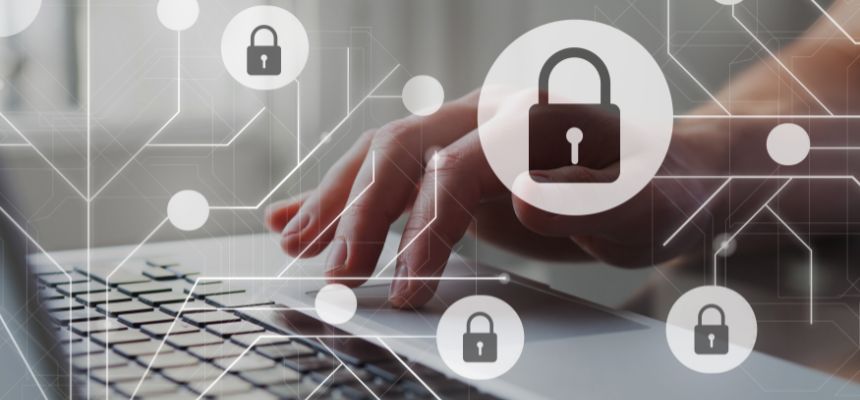Cybersecurity Tips for Small and Medium-Sized Businesses: Protecting Your Digital Assets

In today’s interconnected digital landscape, cybersecurity is a paramount concern for businesses of all sizes. Small businesses, in particular, are increasingly becoming targets for cyberattacks due to their perceived vulnerability and often limited resources for robust cybersecurity measures. Protecting your digital assets from cyber threats is not just a matter of IT security; it’s essential for safeguarding your business’s reputation, financial stability, and long-term viability. This blog post will discuss practical cybersecurity tips tailored specifically for small businesses to help you mitigate risks and enhance your overall security posture.
- Raise Awareness and Training:
One of the most effective ways to prevent cyberattacks is by educating employees about cybersecurity best practices. Conduct regular training sessions to raise awareness about common threats such as phishing, malware, and social engineering tactics. Teach employees to recognize suspicious emails, avoid clicking on unknown links or attachments, and follow secure password protocols. By fostering a culture of cybersecurity awareness, you empower your employees to become the first line of defense against cyber threats. - Implement Strong Password Policies:
Weak passwords are one of the leading causes of data breaches. Implementing strong password policies is crucial for protecting your digital assets. Encourage employees to use complex passwords that include a combination of letters, numbers, and special characters. Consider implementing multi-factor authentication (MFA) to add an extra layer of security to critical systems and accounts. Regularly update passwords and avoid using the same password across multiple accounts to minimize the risk of credential-stuffing attacks. - Keep Software and Systems Updated:
Regularly updating your software and systems is essential for addressing security vulnerabilities and patching known exploits. Enable automatic updates whenever possible to ensure that your operating systems, applications, and antivirus software are always up-to-date with the latest security patches. Consider investing in a vulnerability management system to proactively identify and remediate potential security risks before cybercriminals can exploit them. - Secure Your Network:
Securing your network infrastructure is critical for preventing unauthorized access to your digital assets. Implement firewalls, intrusion detection systems (IDS), and encryption protocols to protect your network from external threats. Segment your network to isolate sensitive data and restrict access to authorized users only. Regularly monitor network traffic for suspicious activity and implement access controls to limit privileges based on the principle of least privilege. - Backup Your Data Regularly:
Data loss can devastate small businesses. A backup strategy, including Business Continuity, is essential for protecting your digital assets from ransomware attacks, hardware failures, or other unforeseen events. Backup your data regularly to both on-site and off-site locations to ensure redundancy and accessibility in the event of a disaster. Test your backup and recovery procedures regularly to verify that they function correctly and can be relied upon when needed. - Secure Mobile Devices:
With the proliferation of mobile devices in the workplace, securing mobile endpoints is critical for overall cybersecurity. Implement mobile device management (MDM) solutions to enforce security policies, monitor device usage, and remotely wipe lost or stolen devices. Require employees to use strong passwords or biometric authentication to access mobile devices and encrypt sensitive data stored on these devices to prevent unauthorized access. - Protect Against Phishing Attacks:
Phishing attacks remain among the most common and effective methods cybercriminals use to steal sensitive information or gain unauthorized access to systems. Educate employees about the dangers of phishing attacks and how to identify and report suspicious emails. Implement email filtering solutions to detect and block phishing attempts before they reach employees’ inboxes. Consider conducting simulated phishing exercises to assess your training programs’ effectiveness and identify improvement areas. - Limit Access to Sensitive Information:
Minimizing the exposure of sensitive information reduces the risk of unauthorized access and data breaches. Implement access controls to limit employee access to confidential data based on their role and responsibilities. Regularly review and update user permissions to ensure only authorized individuals can access sensitive information. Encrypt sensitive data in transit and at rest to protect it from interception or unauthorized access. - Create an Incident Response Plan:
Despite your best efforts to prevent cyberattacks, it’s essential to have a plan in place to respond effectively in the event of a security incident. Develop an incident response plan that outlines the steps to take in the event of a data breach, including how to contain the incident, notify affected parties, and restore normal operations. Assign roles and responsibilities to key personnel and conduct regular tabletop exercises to test the effectiveness of your incident response procedures. - Stay Informed and Adapt:
Cyber threats are constantly evolving, so staying informed about the latest cybersecurity trends and best practices is essential. Monitor industry news, subscribe to cybersecurity blogs and newsletters, and participate in relevant forums or discussion groups to stay ahead of emerging threats. Continuously assess your cybersecurity posture and adapt your strategies and controls accordingly to address new and evolving risks.
The Bottom Line: Protecting your digital assets from cyber threats requires a proactive, multi-layered approach addressing technical and human factors. By implementing these cybersecurity tips tailored specifically for small businesses, you can strengthen your defenses, mitigate risks, and safeguard your company against the ever-present threat of cyberattacks. Remember, cybersecurity is not a one-time effort but an ongoing commitment to vigilance, education, and adaptation in an increasingly digital world.


